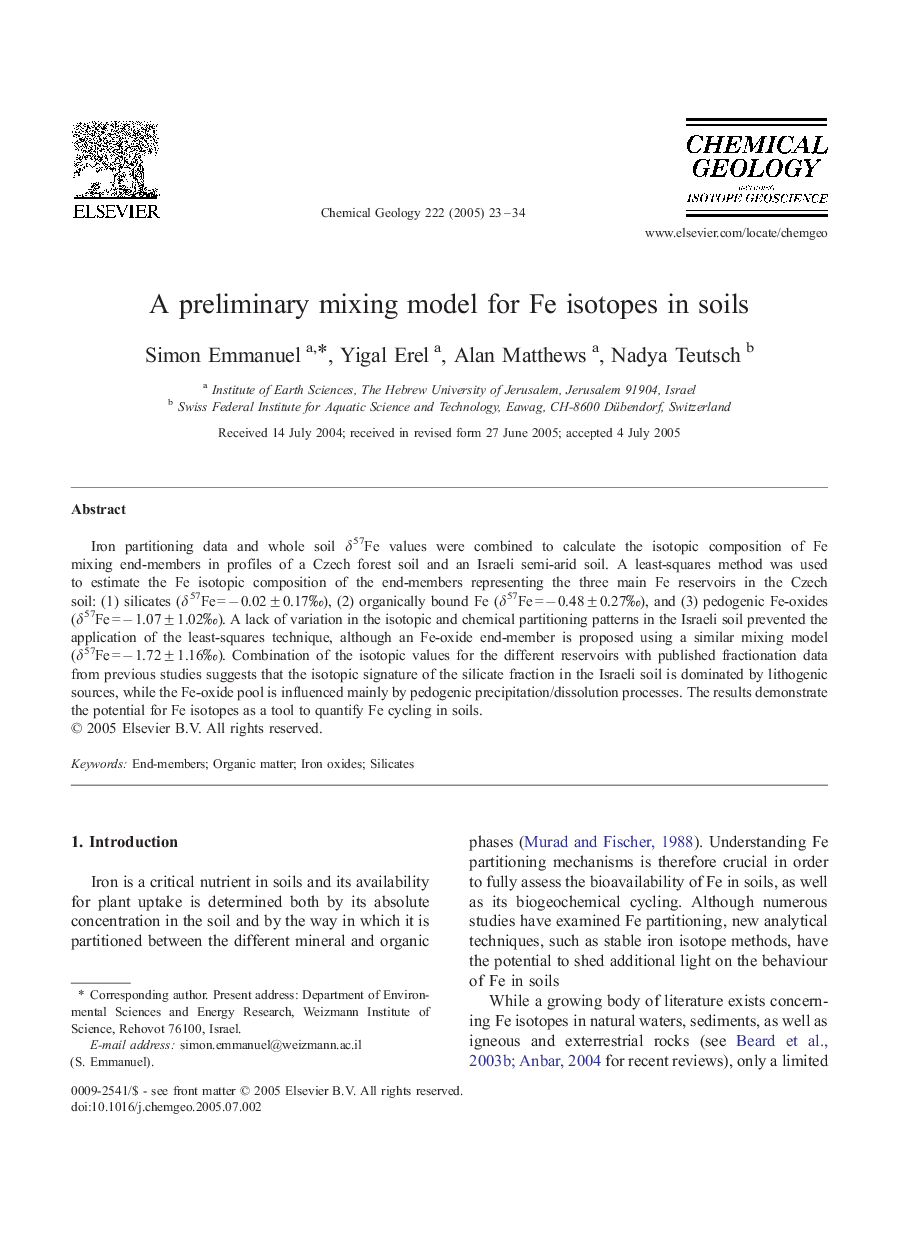| Article ID | Journal | Published Year | Pages | File Type |
|---|---|---|---|---|
| 9529170 | Chemical Geology | 2005 | 12 Pages |
Abstract
Iron partitioning data and whole soil δ57Fe values were combined to calculate the isotopic composition of Fe mixing end-members in profiles of a Czech forest soil and an Israeli semi-arid soil. A least-squares method was used to estimate the Fe isotopic composition of the end-members representing the three main Fe reservoirs in the Czech soil: (1) silicates (δ57Fe = â 0.02 ± 0.17â°), (2) organically bound Fe (δ57Fe = â 0.48 ± 0.27â°), and (3) pedogenic Fe-oxides (δ57Fe = â 1.07 ± 1.02â°). A lack of variation in the isotopic and chemical partitioning patterns in the Israeli soil prevented the application of the least-squares technique, although an Fe-oxide end-member is proposed using a similar mixing model (δ57Fe = â 1.72 ± 1.16â°). Combination of the isotopic values for the different reservoirs with published fractionation data from previous studies suggests that the isotopic signature of the silicate fraction in the Israeli soil is dominated by lithogenic sources, while the Fe-oxide pool is influenced mainly by pedogenic precipitation/dissolution processes. The results demonstrate the potential for Fe isotopes as a tool to quantify Fe cycling in soils.
Related Topics
Physical Sciences and Engineering
Earth and Planetary Sciences
Geochemistry and Petrology
Authors
Simon Emmanuel, Yigal Erel, Alan Matthews, Nadya Teutsch,
